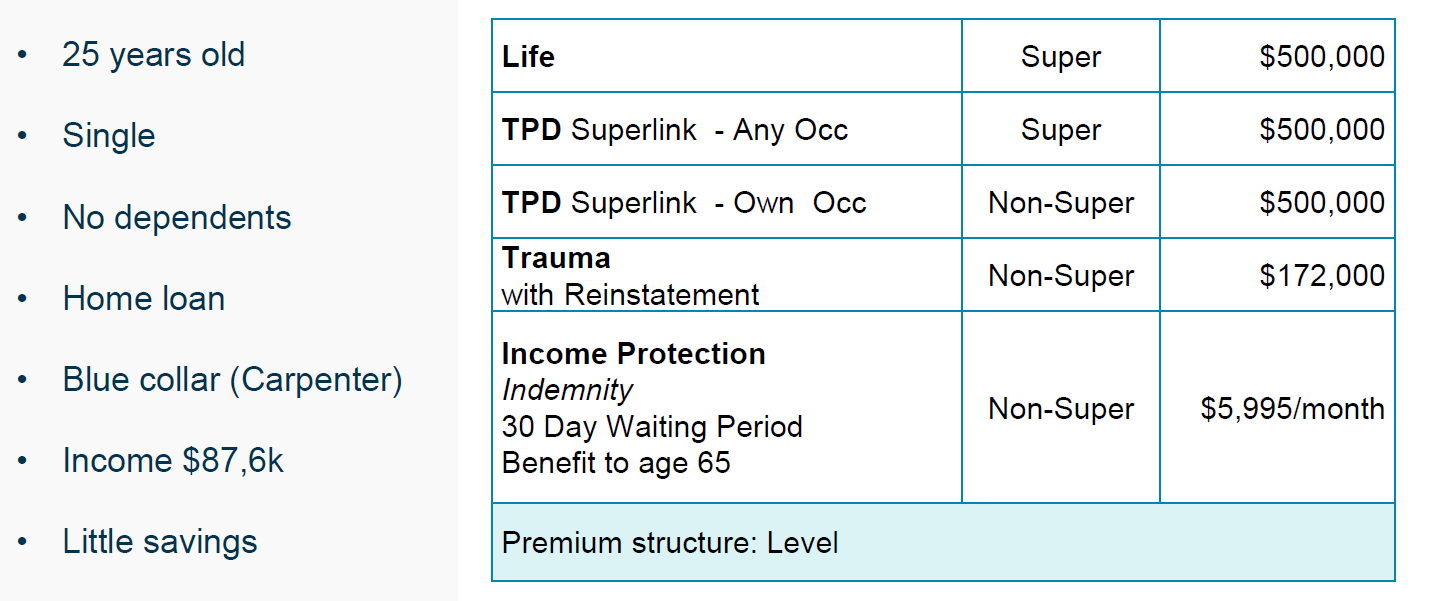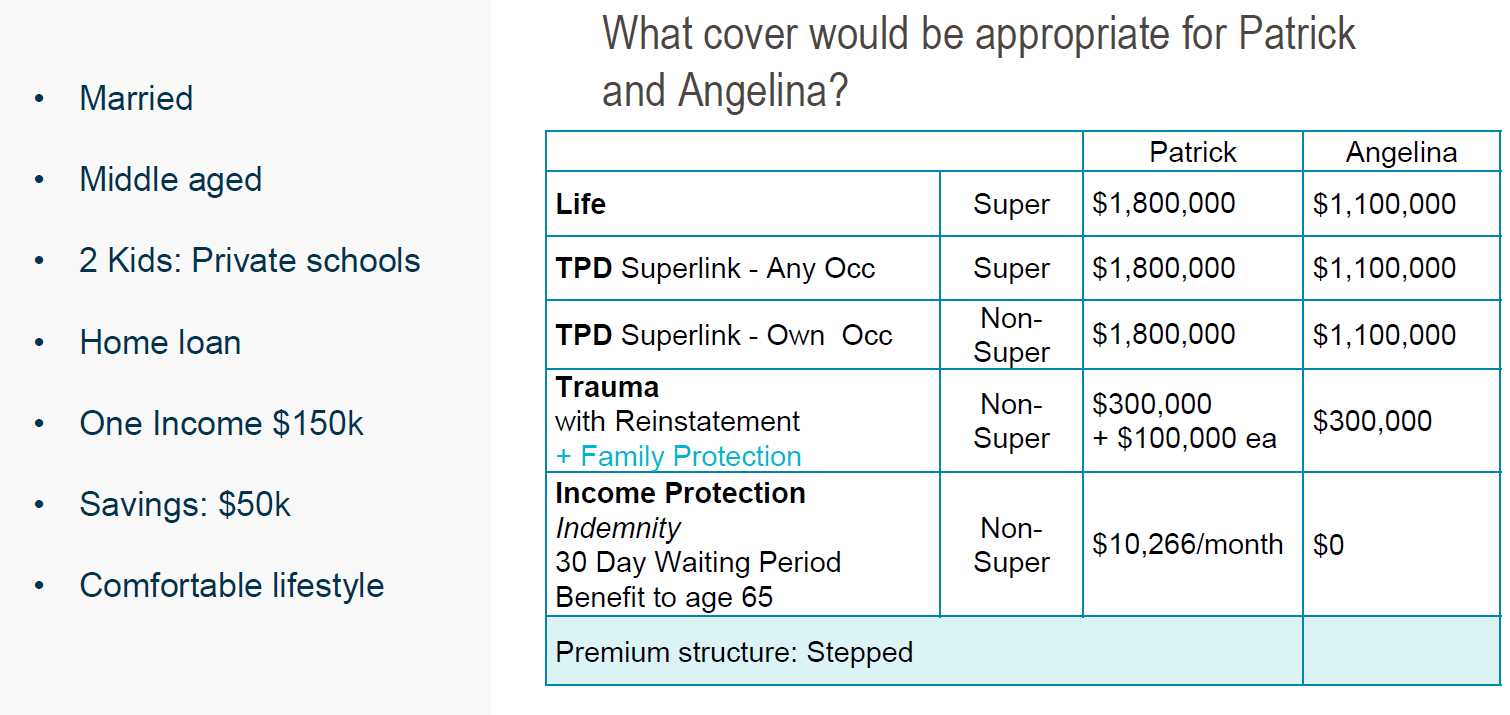We can discuss the theories and concepts of insurance until the cows come home but for most of us it can be really hard to understand without some examples. So in this segment we are going to discuss some of the basic principles behind insurance and then take a look at two case studies to see how specific types of insurance can come into effect when things go wrong and also look at how to calculate what is an appropriate amount of cover to obtain.
1. What will impact my premium?
There are a number of factors which can impact your insurance premium. Some of these include:
• Age
• Gender
• Occupation
• Whether or not you smoke
• Certain pre-existing medical conditions
• Medical or family history
• The policy you choose
• Premium structure
2. How can I reduce my premium?
Some of the ways you can consider reducing your premium (if applicable) include:
• Quit smoking
• Live a healthy life
• Pay your premium annually rather than monthly
• Bundle different types of cover together rather than buying separately
• Take out cover with your partner to receive a multi-policy discount
• Fund your cover through super
3. How much insurance is appropriate for you?
A popular approach used by financial advisers to determine the appropriate amount of insurance cover for a client is the ‘needs approach’. This works the following way:
- Add up all current debts (mortgage, personal loans, credit cards)
- Add up future expenditure required (day-to-day expenses)
- Add up future education expenses (children’s education expenses)
- Subtract your current assets and offsets that could be used in the event of your death (savings/term deposits, shares, other assets that could be sold off)
You should also consider factors specific to your family’s circumstances, including
• Your partner’s age
• The number of children and their age
• Whether or not your partner is working and his/her capacity to earn an income
• Your outstanding debt (including your mortgage)
• Whether or not you will be providing funds for your surviving partner’s retirement
• The number of years you are willing to fund your family’s ongoing needs
Case Study 1:
Below is a summary of a hypothetical client named Nick:

Situation:
Nick has a car accident and injured his arm. He is hospitalised for 1 month and then faces a long and painful rehabilitation process of 12 months.
What would happen if Nick didn’t have insurance?
• Nick has no income for 13 months but must continue to pay his living expenses and home loan.
• Even with Health Insurance there are medical bills to be paid: rehabilitation costs, physiotherapy.
• If Nick doesn’t recover physically, he may not be able to work as a carpenter again.
• His savings are not enough to cover expenses.
How would insurance help Nick in this situation?
• Life: Although Nick has no dependants, taking a life cover while he is healthy provides protection against an unforeseen event causing his health to deteriorate in the future and making him uninsurable.
• TPD: If Nick was totally and permanently disabled and unable to work again, he would receive a lump sum to supplement his income protection plans. If he didn’t have ‘own occupation’, he would have to return to work in any other occupation, even if lower paid.
• Trauma: If Nick lost his arm, he could claim his trauma insurance to cover ongoing medical expenses.
• Income protection: Monthly benefit of $5,995. Nick would be able to cover his living expenses. If Nick’s injury proved to be permanent, he would be paid a benefit for the remaining 40 years of his income earning capacity.
Case Study 2:
Below is a summary of a married couple with two children, the Smith family:

Situation:
Patrick has an unexpected heart attack while jogging one morning and passes away on the way to hospital.
What if Patrick and Angelina didn’t have insurance?
• Angelina may have to return to work but she may be unable to meet the mortgage payments and private school fees.
• Angelina may need to sell the family home to pay off the mortgage.
• Angelina may need to consider a change to the children’s schooling.
• Angelina and the kids’ existing lifestyle may be substantially impacted.
How would insurance help Patrick and Angelina in this situation?
• Life: Angelina would be able to cover funeral expenses. Angelina would be able to pay off the mortgage, cover private school fees and supplement her own earnings. Angelina would not need to return to work full-time. If Angelina was the one that passed away, her Life cover would help Patrick to cover the housekeeping and childcare costs so that he did not have to reduce hours or change job.
• Trauma: If Patrick had survived his heart attack, the trauma cover would have helped fund medical expenses and time off work.
• Income Protection: If Patrick had survived his heart attack but been unable to work again, he would have received monthly payments of $10,266 to help meet the family’s expenses. Due to the savings they had accumulated, Patrick could also have taken out a 90 day waiting, therefore, his policy would have been cheaper.
Key considerations:
• How much of your income would your family need if you are no longer able to provide for them?
• How long would you like the income to be paid for?
• Would you like your mortgage or other debts to be paid off?
• Would you like to leave an inheritance for your children?
• Are there any costs that would need to be met, such as funeral or rehabilitation expenses?
• What investment assets would be available to help meet these needs?
As you can see from the above case studies, all available types of insurance can be extremely beneficial in times of crisis. We never know what is around the corner and these simple case studies go a long way to show how easily our lives can be turned upside down and also how much of a safety net adequate insurance can be. While we make all efforts to review your insurance position throughout the year, if you have any questions or would like to find out more about your options please get in contact with our office.





